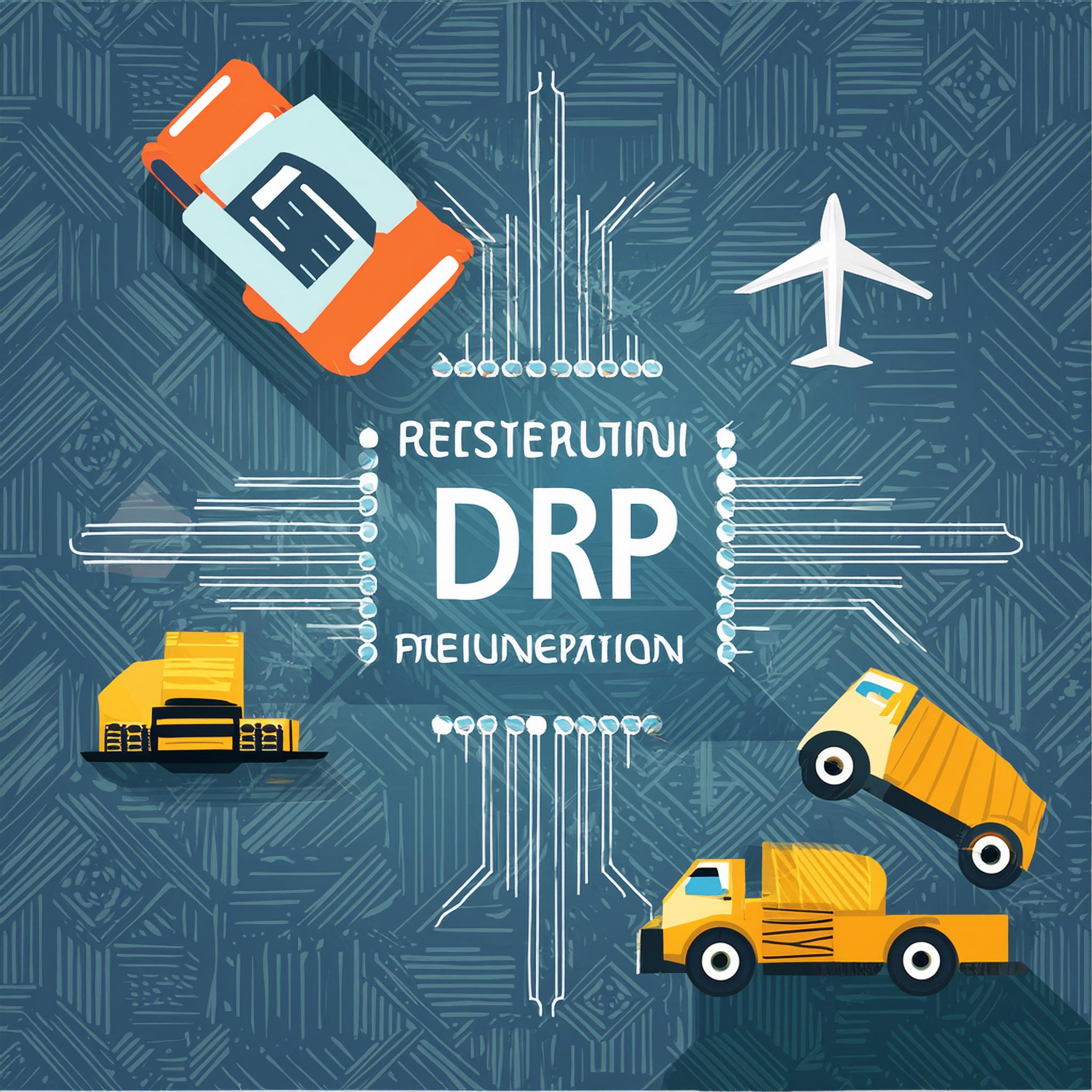Understanding Distribution Requirements Planning (DRP) Fundamentals
In supply chain management, distribution requirements planning, or DRP, is a strategic process that makes sure the correct items are accessible at the right times and in the right amounts to satisfy consumer demand. In order to successfully fulfill orders while reducing costs and maximizing customer happiness, it entails anticipating consumer demand, calculating inventory requirements, and optimizing distribution activities.
Businesses that manage intricate supply chains with several warehouses, retail locations, and distribution hubs need to use DRP. DRP assists companies in preventing stockouts, cutting back on excess inventory, and enhancing supply chain effectiveness by matching inventory levels to projected demand.

Fundamentally, DRP is about maximizing revenue and lowering expenses while meeting customer demands through the optimization of distribution logistics and inventory management. Businesses can improve their competitive edge and guarantee flawless order fulfillment in today’s dynamic industry by utilizing data analytics, demand forecasting, and inventory optimization approaches.
Distribution replenishment planning, or DRP, is a time-based strategy that establishes replacements in advance of inventory running low in order to minimize shortages. DRP is organized like a tree, with a core facility—like a warehouse—serving regional facilities, which in turn feed further facilities farther up the tree. There is no limit to how many levels this structure can have.
One important part of DRP is the table, which includes important aspects of the process like:
- The safety stock objective
- The anticipated demand
- The current inventory levels
- The recommended replenishment quantities
- The lead times for restocking..
DRP distribution can be carried out in a push or pull manner. Commodities move using the pull strategy through the network by fulfilling customer orders. Local management controls the supply of goods, which benefits consumers by making goods more accessible. But when demand moves up the network, managing distribution inventories can become more difficult because every request is unique to the delivering site. This is referred to as the “bullwhip effect,” which happens when minute changes in consumer demand result in significant fluctuations in demand farther up the network.
Conversely, the push method moves objects along the network. Due to the fact that shipments are managed centrally and internationally, costs have generally decreased. On the other hand, if central planning is too disconnected from actual demand, service levels could suffer.
What is DRP?
Distribution Requirements Planning (DRP) is a strategic process in supply chain management that aims to efficiently meet customer demand by optimizing the flow of goods from distribution centers. To guarantee that products are available where and when they are needed, it entails estimating client demand, calculating inventory requirements at multiple distribution locations, and organizing replenishment activities. DRP uses complex algorithms and data analysis to avoid stockouts, lower carrying costs associated with excess inventory, and balance inventory levels.

In essence, DRP seeks to maximize distribution logistics while coordinating inventory levels with projected demand.
Businesses can cut lead times, save transportation costs, and increase overall supply chain efficiency by aligning inventory replenishment with customer orders and production schedules.
By taking a proactive stance, companies may quickly adapt to shifts in consumer demand, market dynamics, and production limitations, guaranteeing that consumers receive their orders on schedule and in the appropriate quantities.
Robust data management systems, precise demand forecasting methods, and smooth supply chain collaboration are necessary for the successful deployment of DRP.
Businesses can improve customer happiness, create a leaner, more responsive distribution network, and gain a competitive edge in the fast-paced market of today by utilizing DRP successfully.
Tools and Software for DRP
Supply chain management activities involving Distribution Requirements Planning (DRP) can be supported by a number of tools and software programs. ERP systems, which enable organizations to manage inventory, estimate demand, and organize distribution activities within an integrated platform, frequently incorporate DRP modules or features. Furthermore, Supply Chain Planning (SCP) systems provide DRP with sophisticated planning and optimization features that let companies estimate demand, model supply chain scenarios, and optimize inventory replenishment plans.

Additionally, companies may track inventory levels, keep an eye on stock movements, and automate replenishment procedures with the use of specialized inventory management software systems.
These solutions offer real-time visibility into inventories throughout the supply chain by integrating with ERP or SCP systems.
TradeGecko, inFlow Inventory, and Fishbowl Inventory are a few examples of this type of software.
For DRP, demand forecasting software is also essential.
It makes predictions about future demand patterns based on past data and market trends by applying statistical algorithms and machine learning techniques.
Businesses can more effectively predict consumer demand and adjust inventory levels by integrating demand forecasting capabilities into DRP operations. Demand Works Smoothie, SAS Forecast Server, and ForecastX are a few examples.
The DRP’s Business Value
Distribution requirements planning (DRP) adds value to businesses by improving overall supply chain efficiency, streamlining distribution procedures, and optimizing inventory management. The following are some crucial facets of DRP’s worth:
- Cost Reduction
- DRP assists companies in lowering the price of carrying inventory, warehousing, shipping, and stockouts. Businesses can enhance profitability by lowering carrying costs, storage charges, and transportation fees by aligning inventory levels with consumer demand and production schedules.
- Better consumer Service
- To effectively fulfill consumer demand, DRP makes sure that the appropriate products are accessible in the correct amounts at the right locations. Customer satisfaction and loyalty increase as a result of shorter lead times, fewer stockouts, and higher order fulfillment rates.

- Enhanced Efficiency
- DRP optimizes logistics processes and minimizes manual labor by automating the planning and scheduling of distribution activities. This increases operational effectiveness, lowers error rates, and helps companies react faster to shifts in consumer demand or market dynamics.
- Optimal Inventory Management
- By matching inventories to projected demand, DRP assists companies in keeping optimal stock levels. This lowers the risk of obsolescence and eliminates superfluous inventory, freeing up working capital and resources for other important projects.
- Supply Chain Visibility
- Demand projections, inventory levels, and distribution operations along the supply chain are all visible with DRP. This helps companies to pinpoint possible bottlenecks, fix inefficiencies in the supply chain, and make data-driven choices to maximize performance.
- Facilitated Growth
- DRP offers the scalability and flexibility to support organizations as they grow and expand into new areas. Through the optimization of distribution and inventory management procedures, DRP helps companies grow without sacrificing top-notch customer support.
Conclusion | Distribution Requirements Planning (DRP) Fundamentals: Simplifying Commercial Distribution
In commercial distribution, Distribution Requirements Planning (DRP) is essential because it allows companies to optimize inventory management and streamline their supply chain operations. Businesses can reduce costs and increase customer satisfaction by utilizing DRP basics to guarantee that the correct items are accessible at the right time and in the right amounts.
By offering a methodical technique for anticipating demand, figuring out inventory needs, and coordinating replenishment activities throughout the supply chain, DRP streamlines commercial distribution. Businesses can obtain real-time visibility into inventory levels, demand projections, and distribution activities by automating planning processes and utilizing sophisticated tools and software solutions, including as ERP systems, SCP systems, and inventory management software.
To put it simply, DRP gives companies the ability to increase operational effectiveness, cut expenses, and enhance customer satisfaction—all of which help them gain a competitive edge in the fast-paced market of today. In the dynamic realm of commercial distribution, companies can effectively manage obstacles, seize chances, and attain enduring prosperity by embracing the principles of DRP and implementing optimal techniques in distribution planning.
image courtesy
Photo by JESHOOTS.com, Photo by ELEVATE, Photo by Pixabay.





